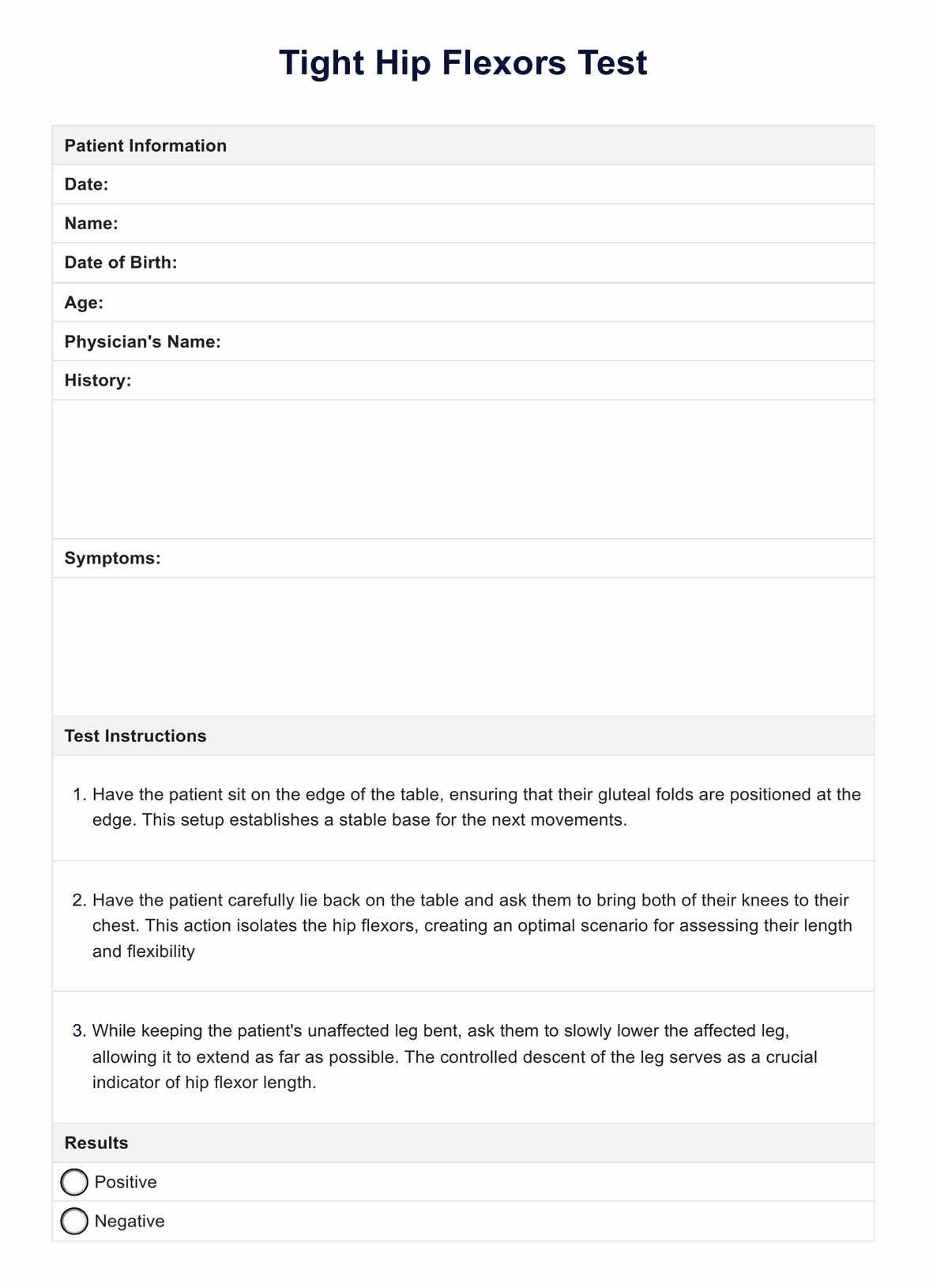Though they can, with the right exercises, these exercises must be recommended by a healthcare professional.

Tight Hip Flexors Test
Assess the tightness of your patient's hip flexor muscles with a tight hip flexors test. Click here for a guide and free template!
Use Template
Tight Hip Flexors Test Template
Commonly asked questions
Diagnosing tight hip flexors may require asking about the patient's medical history or lifestyle, followed by imaging work.
The special test used by healthcare professionals to check hip tightness is called the Thomas test.
EHR and practice management software
Get started for free
*No credit card required
Free
$0/usd
Unlimited clients
Telehealth
1GB of storage
Client portal text
Automated billing and online payments











